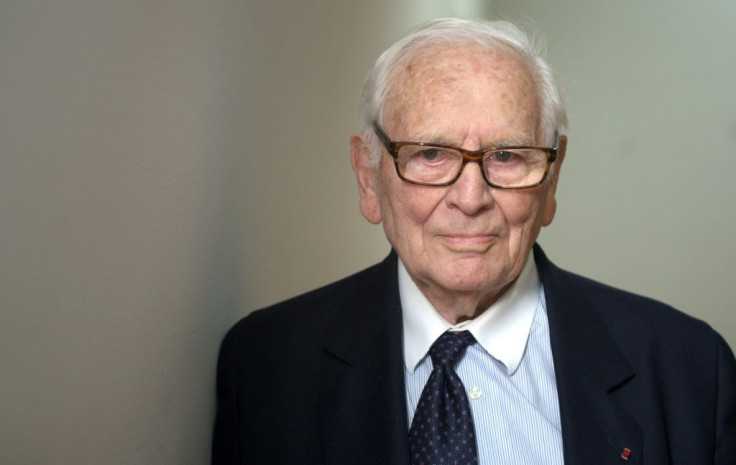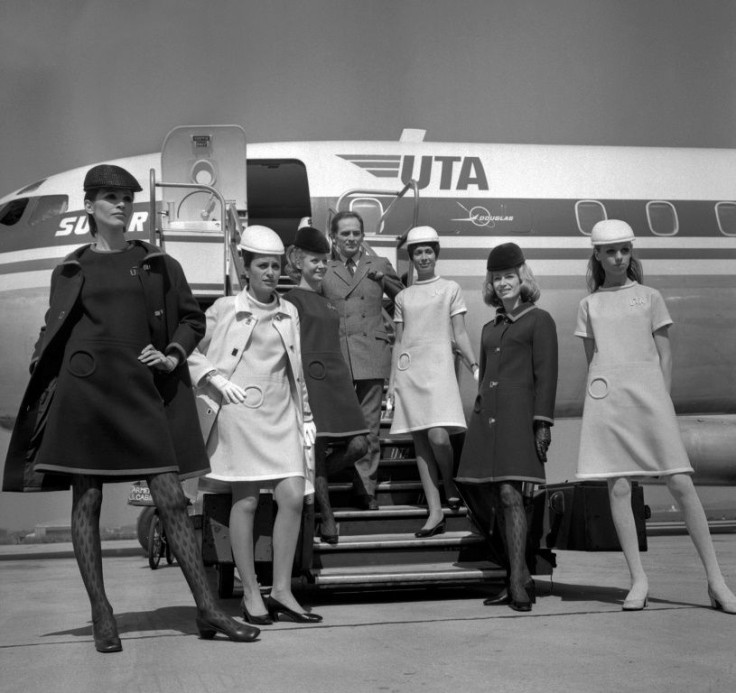French Fashion Pioneer Pierre Cardin Dies Aged 98
French designer Pierre Cardin, who shook up the fashion world with his visionary creations but also turned his name into a money-spinning global brand, died Tuesday aged 98.
Cardin won renown in postwar Europe with his futurist designs that looked like they had arrived from another planet, but he also used his business acumen to create the first truly global fashion empire.
Cardin, who was born into a low-income family in northern Italy but became a France-based fashion superstar, died in a hospital in Neuilly in the west of Paris, his family said in a statement.
"It is a day of great sadness for all our family. Pierre Cardin is no more," the statement said.
It said that after a lifetime spanning a century, Cardin had left France and the world a "great, unique artistic heritage", and not only in fashion.

Designer Jean-Charles de Castelbajac, the artistic director of Benetton, said Cardin was "a very extraordinary man" who did not set borders between fashion, design or architecture.
"His inspiration boosted my imagination," he told AFP, adding that for Cardin the marketing and promotion of his art "was as important as the art itself".
Jean-Paul Gaultier, the so-called "enfant terrible" of the French fashion world, paid tribute to Cardin, who employed him in the early stages of his career.
"Thank you Monsieur Cardin for opening the doors to fashion and making my dream possible," Gaultier wrote on Twitter.

Born in 1922 near Venice in northern Italy, Cardin was a small child when his family emigrated to France.
"Italian by birth, Pierre Cardin never forgot his origins while bringing unconditional love to France," his family said.
He grew up in the French industrial town of Saint Etienne and was apprenticed to a tailor in Vichy at the age of 17, already specialising in women's suits.
Moving to Paris, he designed the mesmerising sets and costumes for the film "Beauty and the Beast" with poet, artist and director Jean Cocteau in 1947.

After a stint with Christian Dior, he had already set up his own fashion label in 1950.
He quickly established a name as an innovator, creating the now legendary bubble dress in 1954.
Cardin also broke new ground commercially, ruffling feathers in the fashion establishment for producing a ready-to-wear collection for the Paris department store Printemps.
His 1964 "Space Age" collection remains a landmark in fashion history. "My favourite item of clothing is the one I create for a life that does not yet exist -- the world of tomorrow," he once said.
Cardin's global empire had a strong presence in Japan, and he broke ground in deals with the Soviet Union and China in the late 1970s.
He was also the first designer to hold a fashion show in Red Square in Moscow in 1991, drawing a crowd of 200,000.
Cardin's family praised how he had plunged "early on into the flow of globalisation".
The designer insisted that he wanted his creations to be worn by ordinary people and not just shown off by the glitterati.
"My goal was the street, that my name and my creations are in the street. Celebrities, princesses... that wasn't my cup of tea. I respected them, I dined with them, but I didn't see them in my dresses," he said.
His coveted brand name was used not just on men's and women's clothing sold at outlets around the world but on goods such as sunglasses and luggage, through a myriad of licensing agreements.
These disturbed some purists but he was unapologetic.
"It is very difficult to make a name in fashion. When you have one, you need to profit from it," he told AFP in 2019.
"If I made money through the licensing it was to be free and do something other than fashion."
But the much-used and franchised Cardin brand eventually lost its lustre, and when he put his fashion label up for sale in 2011 it failed to sell.
"We are all proud of his tenacious ambition and the daring he has shown throughout his life," his family said.
© Copyright AFP 2024. All rights reserved.





















